Another Forgotten Wyeth: Carolyn - "pounds through her days like a war horse"
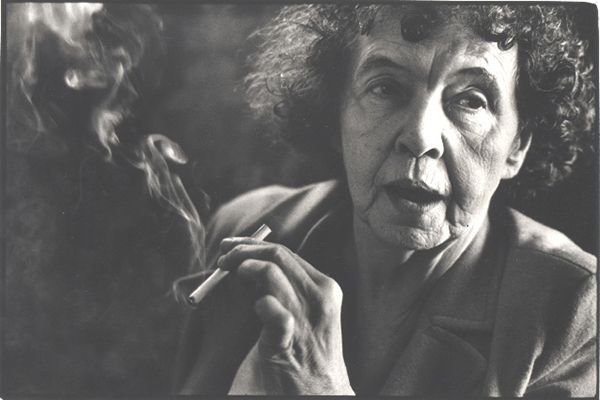
We are continuing with our examination of the artistic talent in the Wyeth Dynasty. So far we have explored the works of N.C.Wyeth; his son Andrew Wyeth and daughter Henriette Wyeth Hurd.
And now we are going to learn more about Carolyn Wyeth (1909-1994) who was the second daughter of N.C.Wyeth and another brilliant artist - yet sadly like her sister Henriette - relatively unknown and overshadowed by their brother Andrew.
Carolyn's perspective on her world was unusual and extremely interesting as illustrated so distinctly in Up from the Woods. I am intrigued by the angle taken in this somewhat delicate painting where the tonal approach is interrupted by the stark introduction of the house.
The DNA in the Wyeth family must have oozed artistic nucleotides!!
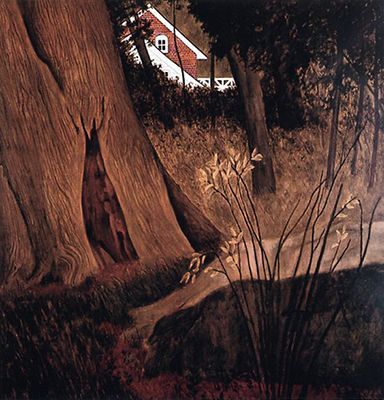
Carolyn Wyeth showed early artistic talent and studied with her father for nineteen years, the longest of any of his students. She lived in the family home at Chadds Ford (Delaware County, Pennsylvania) and Rockland, Maine - painting and teaching art classes. Her most famous student was her nephew Jamie Wyeth (son of Andrew Wyeth) whom we will visit in a few weeks.
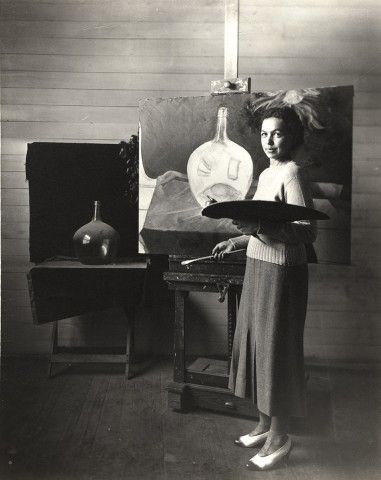
Unlike her sister Henriette, Carolyn Wyeth seldom painted figures, focusing almost exclusively on landscape and still life. Like her father, and especially her brother Andrew, she drew visual sustenance from her immediate surroundings and memories, to create paintings that focused on her studio, interiors and vistas.3
The unusual angles she created in her images are illustrated in two contrasting paintings below.
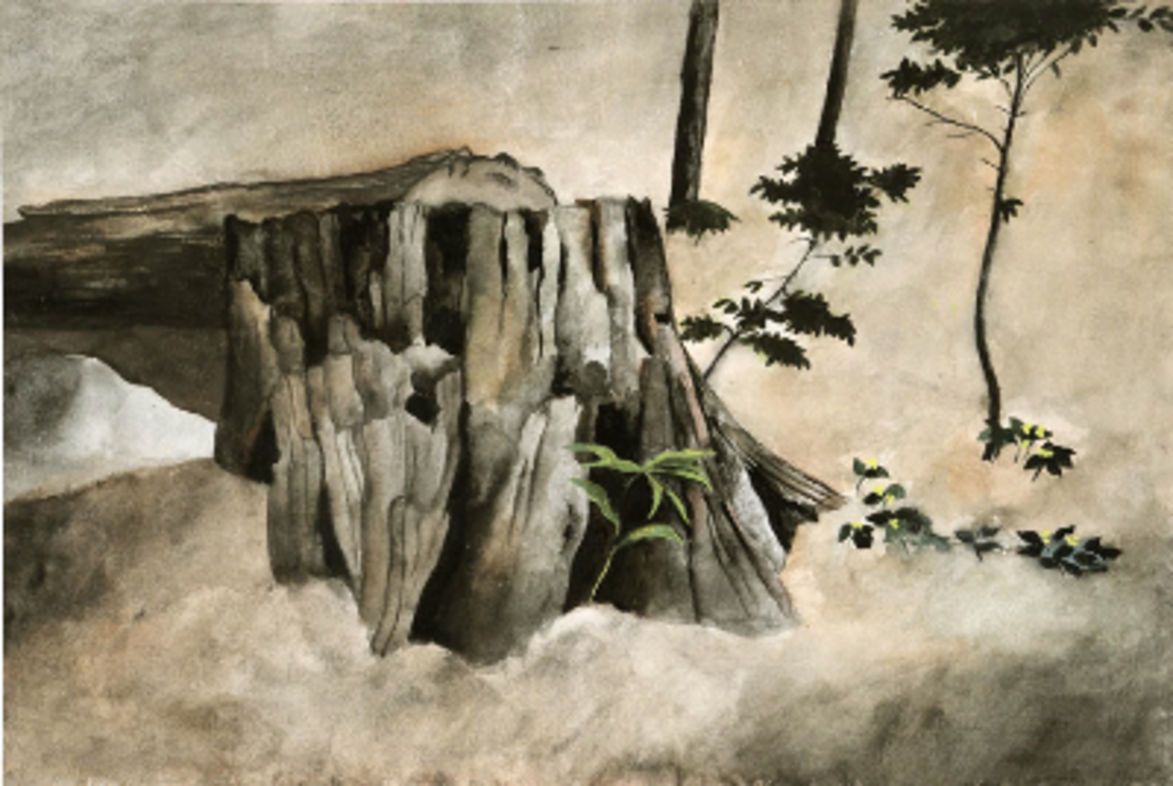
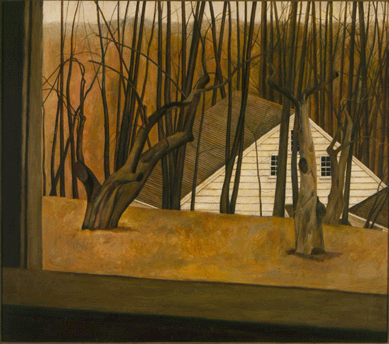
Wyeth developed a highly reductive approach to her subjects and pared down forms to simple but bold, flat shapes often placed in tilting perspectives. Her muted palette, punctuated by bright accents and dramatic contrasts of light and shadow, evokes a sense of solemnity and sad reverie. These imaginative renderings reveal the artist’s deep connection with the Wyeth family home and Chadds Ford where she lived all her life.3
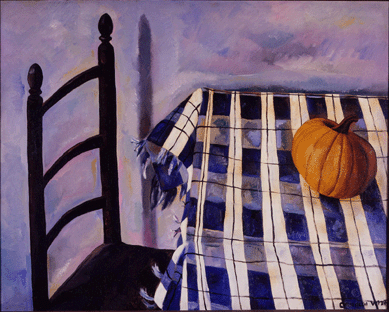
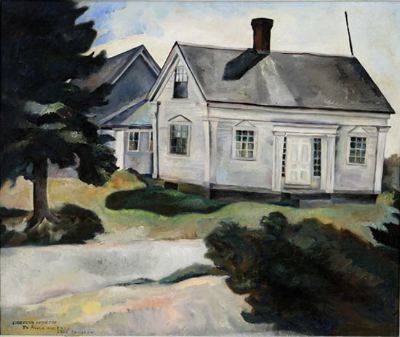
Carolyn grew up among rambunctious, precocious siblings who took their cues from their burly, exuberant and loving father. “He did everything in a big way,” she recalled. “If he bought paint, he bought too much paint which I do.” Surrounded by other would-be artists, Carolyn was expected to make her life in art. Impressing her father with her lively drawings, at age 12 he began giving her serious training in his studio.
But as a youngster, Carolyn resisted her father’s orderly, academic approach, determined to do things her way. She was a consistent nonconformer and outspoken critic. Her father called her “an enthusiast, anarchist, pugilist and angel, all in one,” adding with admiration that she “pounds through her days like a war horse.”
Carolyn developed a keen interest in animals and nature, including ponies, dogs, rabbits and chickens, preferring them to people. She cultivated her own garden and loved roaming the woods and streams around the Chadds Ford house.3
It has been said of Carolyn Wyeth's paintings that they reflect strong design, bold color and nuanced emotion. 7
This is so perfectly illustrated in Open Window.
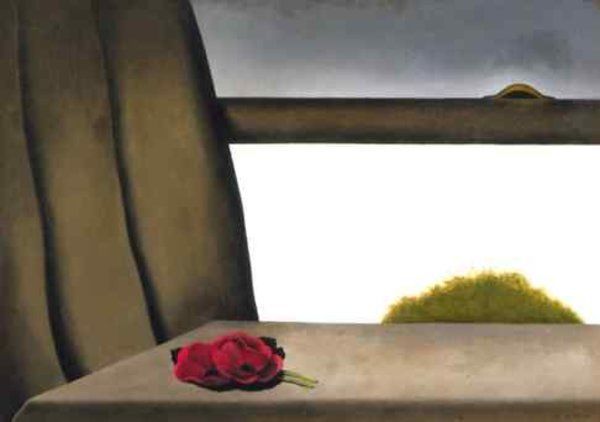
Notice also how Carolyn has, in Spare Room (below), contrasted with economy of line, the form of the curtain aganst the detail of the trees and almost out of view, the mantel with candle stick repeating the line of the tree trunks. A perfectly balanced composition.
Of interest is that these two paintings (Open Window and Spare Room) were painted 34 years apart. Although her style has matured you can detect in both the same desire to emphasise the salient lines, forms and colours.
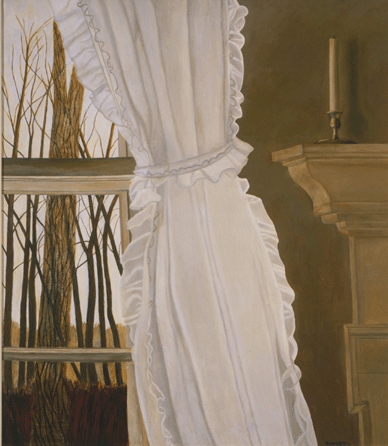
As I have been researching Carolyn Wyeth's works I've been thinking that some of them have a poetic touch. To my delight I found out that Carolyn loved the poems of John Keats - she loved Keats' tie with nature and great simplicity.5
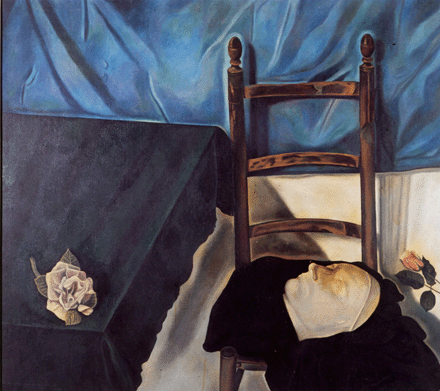
Let's conclude today with a few lines from Keats to honour this fabulously talented and inspirational painter who should have received far more attention.
Keats believed, as did Carolyn Wyeth, that an understanding of nature was essential to the creative process.
The hush of natural objects opens quite
To the core: and every secret essence there
Reveals the elements of good and fair
Making him see, where Learning hath no light. John Keats
A special thank you to the Brandywine River Museum of Art, Chadds Ford, Pennsylvania, for their assistance in acknowledging the credit source for some of the images.
Credits
1. lancasteronline.com
2. Carolyn Wyeth (1909-1994), Up from the Woods, 1974, oil on canvas. Brandywine River Museum of Art, Purchased with Museum funds, 1984 (Item No 84.3)
3. brandywine.org
4. artsy.net
5. Carolyn Wyeth (1909-1994), N.C.Wyeth's Barn, 1974, oil on canvas. Brandywine River Museum of Art, Gifty of Mr. and Mrs. Andrew Wyeth, 1985. (Item No; 85.10.102)
6. cartsy.net
7. en.wikipedi.org
8. Carolyn Wyeth (1909-1994), Open Window, 1944, oil on canvas. Brandwine River Museum of Art, Gifty of Carolyn Wyeth in memory of Mark L. Arnold, 1979 (Item No. 79.2)
9. pinterest.com
10. Carolyn Wyeth (1909-1994), Mask of Keats, ca. 1940, oil on canvas. brandywine River Museum of Art, Purchased with Museum funds, 2003. (Item No. 2003.10)
